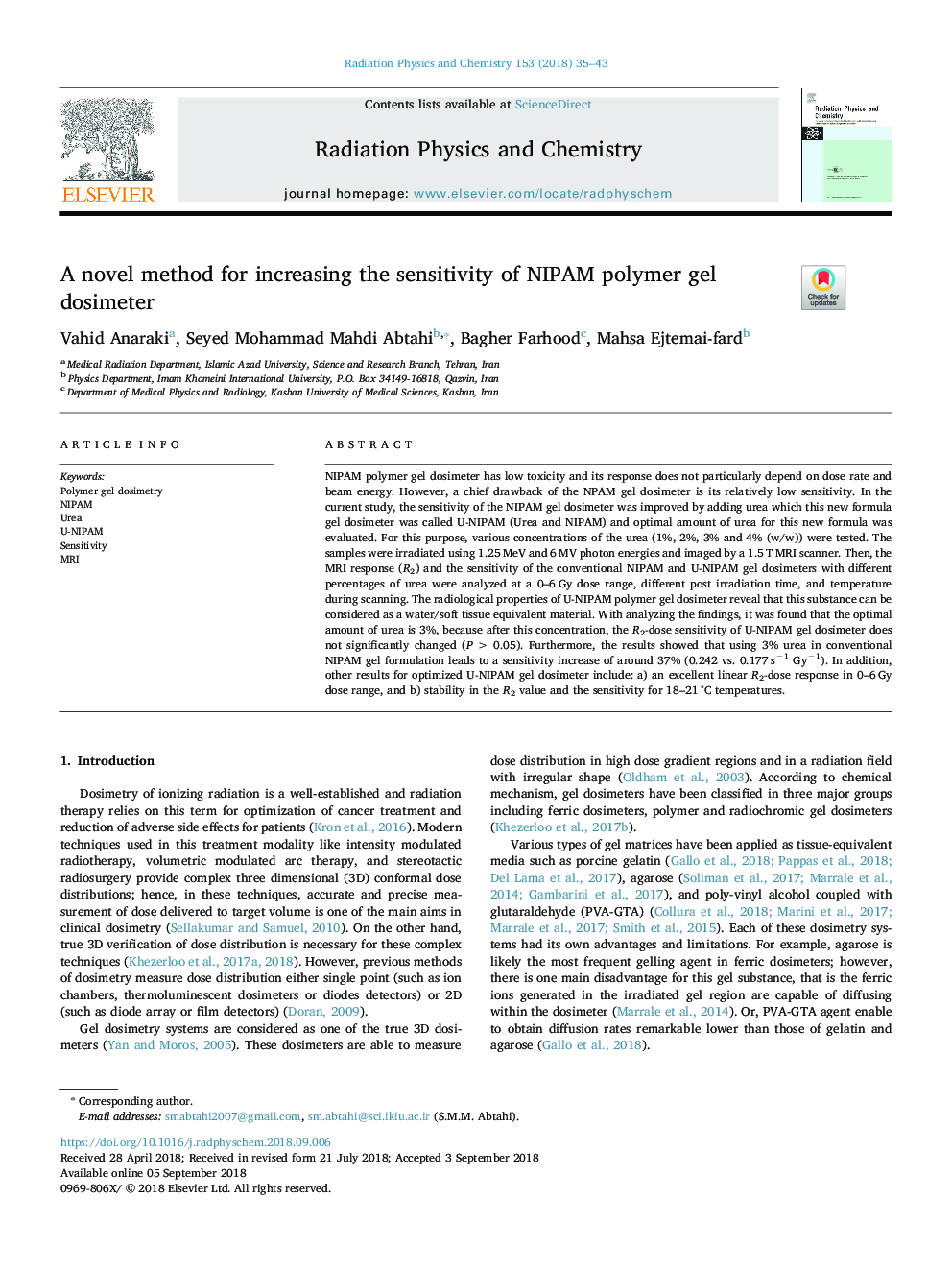| کد مقاله | کد نشریه | سال انتشار | مقاله انگلیسی | نسخه تمام متن |
|---|---|---|---|---|
| 10148088 | 1646516 | 2018 | 9 صفحه PDF | دانلود رایگان |
عنوان انگلیسی مقاله ISI
A novel method for increasing the sensitivity of NIPAM polymer gel dosimeter
دانلود مقاله + سفارش ترجمه
دانلود مقاله ISI انگلیسی
رایگان برای ایرانیان
کلمات کلیدی
موضوعات مرتبط
مهندسی و علوم پایه
فیزیک و نجوم
تشعشع
پیش نمایش صفحه اول مقاله

چکیده انگلیسی
NIPAM polymer gel dosimeter has low toxicity and its response does not particularly depend on dose rate and beam energy. However, a chief drawback of the NPAM gel dosimeter is its relatively low sensitivity. In the current study, the sensitivity of the NIPAM gel dosimeter was improved by adding urea which this new formula gel dosimeter was called U-NIPAM (Urea and NIPAM) and optimal amount of urea for this new formula was evaluated. For this purpose, various concentrations of the urea (1%, 2%, 3% and 4% (w/w)) were tested. The samples were irradiated using 1.25â¯MeV and 6â¯MV photon energies and imaged by a 1.5â¯T MRI scanner. Then, the MRI response (R2) and the sensitivity of the conventional NIPAM and U-NIPAM gel dosimeters with different percentages of urea were analyzed at a 0-6â¯Gy dose range, different post irradiation time, and temperature during scanning. The radiological properties of U-NIPAM polymer gel dosimeter reveal that this substance can be considered as a water/soft tissue equivalent material. With analyzing the findings, it was found that the optimal amount of urea is 3%, because after this concentration, the R2-dose sensitivity of U-NIPAM gel dosimeter does not significantly changed (Pâ¯>0.05). Furthermore, the results showed that using 3% urea in conventional NIPAM gel formulation leads to a sensitivity increase of around 37% (0.242 vs. 0.177â¯sâ1 Gyâ1). In addition, other results for optimized U-NIPAM gel dosimeter include: a) an excellent linear R2-dose response in 0-6â¯Gy dose range, and b) stability in the R2 value and the sensitivity for 18-21â¯Â°C temperatures.
ناشر
Database: Elsevier - ScienceDirect (ساینس دایرکت)
Journal: Radiation Physics and Chemistry - Volume 153, December 2018, Pages 35-43
Journal: Radiation Physics and Chemistry - Volume 153, December 2018, Pages 35-43
نویسندگان
Vahid Anaraki, Seyed Mohammad Mahdi Abtahi, Bagher Farhood, Mahsa Ejtemai-fard,